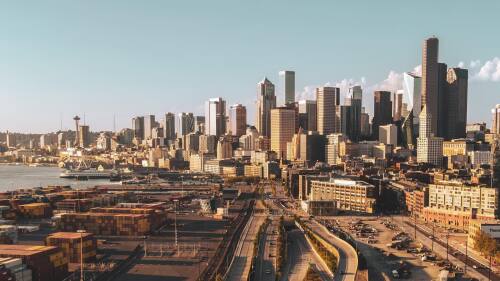Well, that shook us up a bit. On Sunday, a 4.3 magnitude earthquake hit the area south of Port Townsend, sending tremors from Seattle to Olympia.
The quake wasn’t large enough to cause much trouble — in fact, you may not have even felt it at all. But with the Great Washington Shakeout taking place Thursday, Oct. 19, now’s a good time for a safety refresher before the next rumble arrives.
Stay on alert
You may want to familiarize yourself with ShakeAlert, an early warning earthquake system from the US Geological Survey that operates in Washington. The system automatically sends out text alerts to phones before damaging shakes arrive so folks can take cover — prep time is dependent on how far you are from the epicenter.
Most phones should already be set up to receive ShakeAlerts, but you can sign up for a more robust form of the system (that includes info like damage reports) through the app MyShake.
If Sunday’s quake had registered at least a 4.5, ShakeAlert would have sent out emergency texts. Serious damage can occur from earthquakes measuring 6-7 — and if an earthquake measures 8.7-9.2, that would be the really big one.
Learn the basics
Not that you’ve got alerts locked in, it’s time to:
- Locate your nearest Emergency Community Hub, which are places where neighbors gather after a disaster to help each other. Seattle has 135 of them.
- Get an emergency kit ready by building one yourself or buying one fully loaded.
- Learn how to drop, cover, and hold on. The greatest earthquake hazards will likely come from flying objects, so getting low to the ground, taking cover under a table (if possible), and gripping on tight can minimize risk.
You can get a few practice reps in next Thursday at 10:19 a.m. when millions of Washington residents will participate in Shakeout drills.











